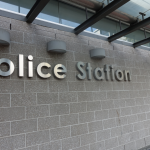Helping in an Emergency and Filming Police – Your Responsibilities and Rights

It seems that almost everyone has a smartphone these days, and many are keen to record public encounters with police and even situations where others may be in danger.
While such footage can be important in keeping police accountable and useful for the purposes of subsequent investigations, it is important to know your legal rights and responsibilities when filming in public.
Duty of care to the Injured
Under Australian law, bystanders to an emergency, accident or dangerous situation do not have a general legal duty to assist – although there may be an obvious moral duty to help someone who is in dire need of assistance.
This is different to the situation where a legal duty of care arises due to a relationship– such as a teacher’s duty to an injured student on a school trip, a parent or guardian’s duty towards their child, or a lifesaver’s duty to assist a drowning person in his or her designated area.
That said, it is important to bear in mind that a duty of care may arise in certain situations where a bystander comes to the aid of a person in need. Such a duty may then be breached and legal liability may arise if the person fails to take proper steps to assist, and thereby acts negligently.
To complicate things even further, section 57 of the Civil Liability Act 2002 (NSW) provides “good samaritans” with some legislative protection against civil liability for attempting to help a person in need.
Under the section, a good samaritan is someone who acts in an emergency to assist a person who is apparently injured or at risk of being injured.
In order to rely on the section, the good samaritan must be:
(a) Unimpaired by voluntary intoxication, including medication; and
(b) Exercising reasonable due care and skill.
The protection does not apply if the person seeking relief was responsible for the situation in the first place.
Filming an emergency situation
There is no law against filming an emergency situation, provided there is no physical interference with the person at risk.
However, as associate professor Dr Michael Eburn explains, there may be a clear moral duty to call emergency services rather than simply film the event, and a person may face a justifiable public backlash if they upload footage to social media without having taken steps to help.
Filming police
Similarly, there is no law against filming police in a public place, provided the officers are not hindered in the execution of their duties.
A ‘public place’ is broadly defined by section 3 of the Summary Offences Act 1998 (NSW) as “a place (whether or not covered by water), or a part of premises, that is open to the public, or is used by the public whether or not on payment of money or other consideration, whether or not the place or part is ordinarily so open or used and whether or not the public to whom it is open consists only of a limited class of persons, but does not include a school”.
The definition includes private property that is open to the public, such as shopping centres, movie theatres and most parks, unless there are other laws which restrict filming; such as those applicable to courthouses and laws which prohibit the filming of private parts without consent.
As stated in the classic case of Victoria Park Racing & Recreations Grounds v Taylor (1937) 58 CLR 479, there is “no property in a spectacle”, and Dr Eburn correctly advises that “[i]f something is happening in a public space, and you’re not going on a private property or anything, you can film it.”
Position of the NSW Police Force
It might also be noted that the NSW Police Force media policy acknowledges that, “members of the public have the right to take photographs or film police officers which are observable from a public space or from a privately owned place with the consent of the owner or occupier.”
The legality of filming police in public became a live issue during the 2013 Sydney Mardi Gras, when members of the public began filming a heavily-built police officer allegedly assaulting a slightly-built participant. During the incident, the officer repeatedly directed members of the public to stop filming the incident.
In response, deputy police commissioner Mark Murdoch criticised the officer’s directions, telling the media:
“We support the right of the community to film anyone in a public space and we do so ourselves… Our police need to be mature enough to know that everyone has a mobile phone with a camera facility and they will use that”.
Hindering police
Section 546C of the Crimes Act 1900 (NSW) contains the offence of hindering police.
The section states that “Any person who resists or hinders or incites any person to assault, resist or hinder a police officer in the execution of his or her duty shall be liable on conviction before the Local Court to imprisonment for 12 months or to a fine of 10 penalty units, or both.”
Ten penalty points is currently equivalent to $1,100 in NSW.
The offence may be established if a member of the public comes between officers and the person against whom their duties are being exercised, or otherwise interferes with the interactions, or with the ability of officers to conduct their jobs.
Dr Eburn adds that, “[p]olice, and all the emergency services to a lesser degree, can set up boundaries to define the area in which they’re operating and they can restrict the right of people to come in or require them to leave”, and that crossing into the restricted area may amount to a hindrance.
Essential part of common law
Secretary of the NSW Council for Civil Liberties, Stephen Blanks, describes the right to film in public as an “essential part of common law”, noting that:
“The media rely heavily on the right to film in public places to produce news and other programs, so it’s an absolutely fundamental right of any free society that things which occur in public can be filmed”.
So there is no law against filming an emergency situation or an encounter with police in public, as long as it does not involve an interference or hindrance.







